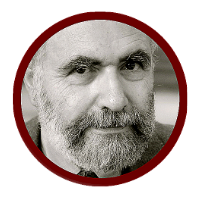Another French Revolution? The suburban rioters and their admirers–on the right and the left.Mama Galledou, a 26-year-old student from Senegal, had just completed work on her degree in nutrition at the Saint Jerome Faculty of Science and Technology in Marseille. She will probably never lead a normal life again–if she survives at all: She was nearly burned alive on October 28 as she was traveling by bus through Marseille's 13th district, where the Saint Jerome campus is located. It was 9:00 P.M. The bus was almost empty. At the bus stop near Cité des Lilas, a public housing estate, three young men had earlier blocked the doors and asked the driver to wait for their friends. The driver obliged for a minute or two, and then got impatient, shut the doors, and left. The youths shouted that they would take their revenge. So they did, a bit later on, as the bus was driving the same road back and stopped again at Cité des Lilas. Two of the boys got on by the rear entrance, sprinkled gasoline, and set it alight. The horrified passengers rushed out. Somehow, Galledou's clothes caught fire. According to one witness, "it was as if someone peeled her skin with an invisible knife: from a black woman she was turning into a white one." At the local hospital, they reported burns over 62 percent of her body. She remains in a coma, fighting to survive.
Galledou's tragic fate is a microcosm of the crisis now engulfing France. In recent weeks, torching buses has suddenly become prevalent in the Paris suburbs and other urban areas. Just two days before the attack in Marseille, Le Monde, the country's authoritative (if left-wing) paper of record, ran a front-page story about this new development and noted that it usually requires a much higher level of organization and discipline than casual car torching. In Bagnolet, on October 25, a gang of ten torched a night bus on the 122 line (in Seine-Saint-Denis, a northeastern suburb of Paris). In Nanterre, Hauts-de-Seine (the western suburbs), a similar attack took place the same day on a bus on the 258 line. On October 22, a bus was torched at Grigny, Essonne (the southern suburbs). As a result, the local company in charge of public transportation suspended night traffic on no fewer than 17 bus lines. It remains to be seen whether the attackers in Marseille–six suspects have been arrested–were just teenagers perpetrating a copycat crime, or if they were connected with a network.
There have also been cases of organized large-scale stoning, or caillassage, as it is called in contemporary French slang: On October 25, a group of 50 people or more stoned private cars on National Road 445 near Grigny, an important suburban link. National security police (CRS) had to be sent in, as well as the Anti-Crime Brigade (BAC), France's toughest cops. And consider, too, the organized attacks this fall on policemen, firemen, and other public security personnel. On September 19, two CRS officers were chased by threatening youths at the Tarterets housing project in Corbeil, Essonne. Ten days later, on September 29, a man described as "insane" opened fire on a CRS company at Clichy-la-Garenne, Hauts-de-Seine. On October 1, seven policemen were chased and wounded at Mureaux, a more distant suburb west of Paris. Similar incidents occurred, almost routinely, throughout the month of October.
More often than not, the CRS or police were not just attacked but ambushed. "One gets the feeling that war orders have been issued against the cops," wrote Le Nouvel Observateur, the liberal weekly, on November 1. Cyrille Brown, secretary general of the leftist CGT bus drivers union, insisted: "What we have now are organized attacks." Michel Thooris, a spokesman for Action Police, a conservative police union, expressed the view that "this is not just a matter of angry unemployed youths who get violent at times," but "something carefully planned."
The public-housing projects that gradually burgeoned around most French cities in the second half of the 20th century now serve as strongholds and training grounds for these violent gangs. After the incident on National Road 455, the stone-throwers were rolled back into the neighboring projects, but there was no further pursuit. One police source confided to Le Monde that security forces were actually "discouraged" from making incursions into those neighborhoods, except on rare occasions. The source went on: "It is a terrible mistake. Since we avoid going inside, where they are, they attack us outside, where we are."
Most French suburban public housing was originally designed by talented architects, and could have developed into pleasant neighborhoods. Mass immigration had an adverse effect on them, however, and turned them into either North African or black African ghettoes (an estimated 15 percent of the overall French population–one quarter of the population under 20–is now non-European and non-Judeo-Christian). Ethnic criminal gangs took over, as often happens under such circumstances: They forced the last native French or European inhabitants out, and made it increasingly difficult for the police to enter and monitor the projects. Later, fundamentalist Islamic brotherhoods asserted themselves in the projects, or cités, as they are called.
A complex relationship seems to have arisen between these two power centers. On the one hand, the fundamentalists intended to protect the immigrant community against everything the gangs stood for: drugs, alcohol, sexual promiscuity, easy money from crime. On the other hand, they derived benefits from the ethnic enclave status the gangs had secured. A tacit or not so tacit agreement was reached: The brotherhood would ignore, and at times condone as "holy war," the activities of the gangs outside the neighborhood; the gangs would help the brotherhoods to impose Islamic law on the inside.
There was a further division of labor: When the gangs would engage in inordinate violence against the police or non-Muslim communities, the brotherhoods would act as "wise men" available to mediate between the government and the gangs and to help restore law and order–on their own terms. According to many experts, this is precisely what happened last year, when the conservative minister of the interior, Nicolas Sarkozy, talked of "thoroughly cleansing" ("passer au Kärcher") the eight hundred or so no-go zones that had cropped up all over urban France. Neither the gangs nor the fundamentalists liked that prospect. The gangs masterminded unprecedented "youth riots""less provocative" police presence in the suburbs, i.e., no "cleansing," more privileges for Islam as "France's second and most quickly growing religion," and recognition for themselves as national leaders. As Michel Thooris put it in an interview with L'Est Républicain, an influential newspaper in eastern France: "Security is a state prerogative. Inasmuch as the national police fail to provide it, the imams are ready to usurp it."
The riots last year clearly ended as a victory for both the gangs and the fundamentalist imams. Why, then, are they being reenacted? One commonly heard explanation is that "the youths" want to "celebrate." Far more plausible is that the new wave of violence is an intervention in the coming national elections: the presidential election in April and May 2007 and then the parliamentary election of June. Oddly enough (or perhaps not so odd), the frontrunners, on both the right and the left, are champions of law and order: Sarkozy is poised to be the conservative contender; as for the Socialists, Ségolène Royal, the governor of Poitou-Charentes in western France, has just easily won the primary.
The daughter of a right-wing Catholic general, Royal aims to become France's Tony Blair and perhaps even, as The Economist suggested recently, France's Margaret Thatcher. She outdoes Sarkozy in many respects: She wants to bring back discipline to schools, send criminal teenagers to boot camps, and reinstate the draft, for both boys and girls, in order to teach them "republican and patriotic values." And that makes her quite popular among liberal and conservative voters alike. Clearly, each of these candidates is seen as a major threat by the ethnic powers that be. It would be safer to destabilize them now. Among conservatives, both President Jacques Chirac and Prime Minister Dominique de Villepin remain more eager than Sarkozy to show "understanding" for "the youths." Among Socialists, Royal's chief rivals–Dominique Strauss-Kahn and Laurent Fabius–are likewise posturing as more tolerant.
Some analysts claim that this urban violence, both last year's and this year's, is not ethnic but rather a matter of social class. There are, indeed, native French youths among the rioters: According to the Ministry of the Interior and other government sources, 16 percent of the young rioters brought to court last year appear to be the offspring of French-born parents. Conversely, the victims of urban violence are as likely to belong to ethnic or religious minorities as are those who engage in it. Mama Galledou is Senegalese. The passengers who, unlike her, managed to escape from the burning buses, are predominantly immigrants or the French-born children of immigrants.
A further argument for a social rather than ethnic or religious interpretation of the present crisis is that one finds much support for the rioters among the predominantly white and non-Muslim parties of the far left: the two Trotskyite parties, what is left of the old Communist party, and the Greens. Even among the far right activists–for whom hatred of America, Israel, and the "free-market European Union" tends to outweigh any other consideration–there is support for the gangs.
Indeed, there are intellectuals on the left and right who relish the prospect of a new French Revolution, and welcome the suburban rioters as its spearhead. Nothing is more revealing, in this respect, than the success of a feverish political novel, Supplément au roman national (A Sequel to the National Narrative), by 28-year-old author Jean-Eric Boulin. Published two months ago, it forecasts a "social and racial" revolution in France in 2007. First a wave of suicide bombings in Paris. Then martial law. Then, finally, the great rebellion of the French poor: the native underclass, the Arabs, and the blacks, who unite under the green flag of Islam and the tricolor of France and march on Paris–as a sort of Commune in reverse. Boulin gallantly supports such an outcome.
One can make too much of this line of argument, however. Even if some rioters are of native French stock, the fact is that most of them are not. And even in Boulin's hallucinatory novel, Arabs and blacks outnumber the native French in the revolutionary coalition–an implicit admission that the present violence is primarily ethnic.
Still, it would be wise not to write off entirely the possibility of a green-red alliance. There is a historical precedent in the spread of Islam itself, in the 7th century. It is well known that the newly founded religious empire from Arabia overran in less than two decades the two mightiest powers of the time, the Christian Byzantine Empire and the Mazdean Persian Empire. What is less well known is that the Arab expansion coincided, in both places, with a deep ethnic, religious, and social crisis. In fact, the Arabs didn't outright conquer Palestine, Syria, Anatolia, Egypt, North Africa, Iraq, and the Iranian plateau. They struck alliances with the local rebels: the Copts and the Syriacs, the Nestorians and the Donatists, the Jews and the Mardakites, with those who spoke neither Greek nor Persian and shared neither the beliefs of the basileus nor those of the shah. Even the green flag of Islam was borrowed from non-Arabs: It was originally the symbol of rebellion in Byzantium, the equivalent in its day of the red flag in ours.
Can history repeat itself, and fundamentalist Islam subdue Europe in the 21st century with the help of European extremists? Will the green flag and the red flag wave side by side? Buses are burning in France and nobody, so far, seems to know how to stop that.
© Michel Gurfinkiel & The Weekly Standard, 2006


